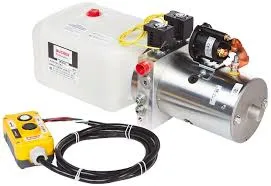Dec . 15, 2024 01:35 Back to list
Seals Manufacturing in Hydraulic Cylinder Production Facilities
Understanding Seals in Hydraulic Cylinder Factories
Hydraulic cylinders are fundamental components in various industrial applications, from manufacturing machinery to construction equipment. One critical element that ensures their efficient performance is the seals used within these systems. Understanding the role of seals in hydraulic cylinder factories can shed light on how they contribute to the functionality and longevity of hydraulic systems.
The Purpose of Seals
Seals in hydraulic cylinders serve several essential functions. Primarily, they prevent the leakage of hydraulic fluid, which is crucial for maintaining pressure and ensuring the efficient operation of hydraulic systems. In addition to leakage prevention, seals also protect the internal components of the cylinder from dust, dirt, and other contaminants, which can significantly reduce the lifespan of the equipment.
Types of Seals
There are various types of seals employed in hydraulic cylinders, each designed to meet specific performance requirements. The most common types include
1. O-Rings These are circular seals made from elastomeric materials, commonly used for static and dynamic sealing. They are versatile and can be found in various sizes and materials to suit different applications.
2. U-Cups U-shaped seals are often used in hydraulic applications due to their ability to handle high-pressure scenarios. They provide excellent sealing capabilities and are typically utilized for piston and rod seals.
3. V-Rings These seals are specially designed to handle a combination of radial and axial loads, making them suitable for applications with complex movement patterns. Their design allows them to maintain effective contact under various conditions.
4. Backup Rings These are used in conjunction with other seals to prevent extrusion under high pressure. They are essential for extending the life of primary seals by providing structural support.
Material Considerations
seals in hydraulic cylinder factories

The choice of material for hydraulic seals is crucial, as it impacts performance, durability, and resistance to environmental factors
. Common materials include- Nitrile Rubber (NBR) Known for its excellent oil resistance, NBR is widely used in hydraulic applications. However, it may not perform well in extreme temperatures.
- Fluoroelastomer (FKM) This material has superior temperature and chemical resistance, making it suitable for harsh environments. It is often used in high-performance hydraulic systems.
- Polyurethane Known for its excellent wear resistance and mechanical properties, polyurethane seals are often used in applications where durability is paramount.
Manufacturing Processes
The fabrication of seals involves intricate processes to ensure quality and reliability. Typically, the manufacturing process includes molding, machining, and surface treatment. Each step requires stringent quality control measures to prevent defects that could lead to premature failure.
In hydraulic cylinder factories, advanced technologies like CNC machining and precision molding are employed to achieve high tolerances and ensure that seals fit perfectly into their respective cylinders. Moreover, stringent testing is conducted to verify that the seals perform effectively under varying pressure and temperature conditions.
The Importance of Quality Control
Quality control is paramount in hydraulic cylinder factories. Since seals are critical components that determine the overall efficiency and safety of hydraulic systems, they must meet high standards. Factories implement comprehensive testing procedures, including dimensional checks, material inspections, and performance tests, to ensure that every seal produced conforms to industry specifications.
Conclusion
In conclusion, seals in hydraulic cylinder factories play a vital role in ensuring the efficiency and longevity of hydraulic systems. With various types and materials available, manufacturers must carefully select and produce seals that meet the specific needs of their applications. By maintaining stringent quality control measures and adopting advanced manufacturing techniques, hydraulic cylinder factories can produce reliable seals that contribute to the effective operation of hydraulic systems in numerous industries. As technology continues to advance, the potential for improved seal designs and materials will likely enhance hydraulic cylinder performance even further, ensuring their continued relevance in modern industrial applications.
-
Fork Lift Power Units - Hebei Shenghan | Efficiency, Reliability
NewsJul.13,2025
-
1.5-Ton Turbocharged Cylinder-Hebei Shenghan|Hydraulic Solution,Energy Efficiency
NewsJul.13,2025
-
Auto Hoist Power Units-Hebei Shenghan|Efficiency&Industrial Lifting
NewsJul.13,2025
-
Double Acting Power Units-Hebei Shenghan|Hydraulic Solutions,Industrial Efficiency
NewsJul.13,2025
-
1.5 Ton Lifting Cylinder 70/82-40-290-535 - High-Performance Hydraulic Solution | Hebei Shenghan
NewsJul.13,2025
-
Fork Lift Power Units - Hebei Shenghan | Efficiency&Reliability
NewsJul.13,2025
